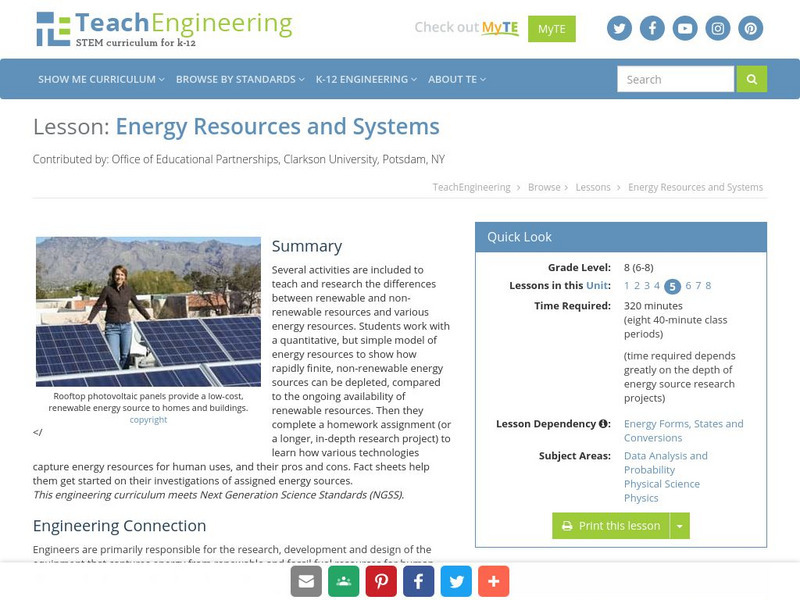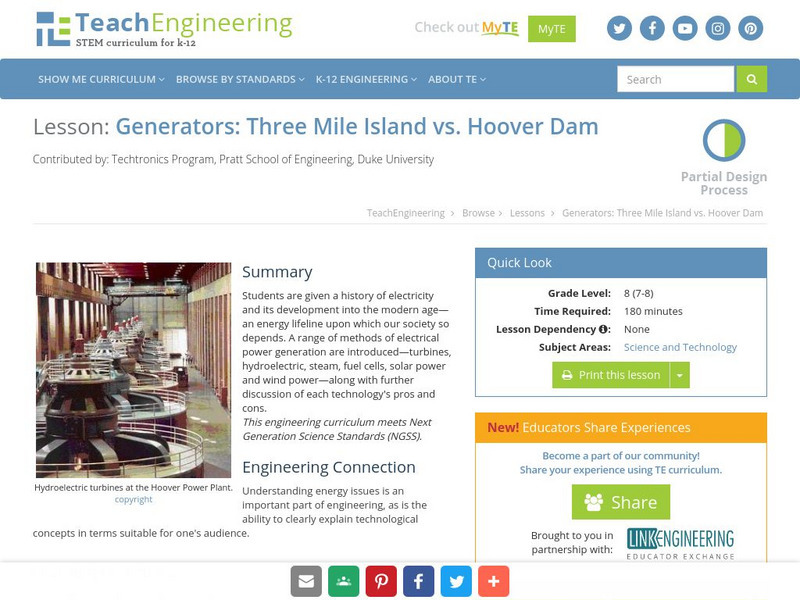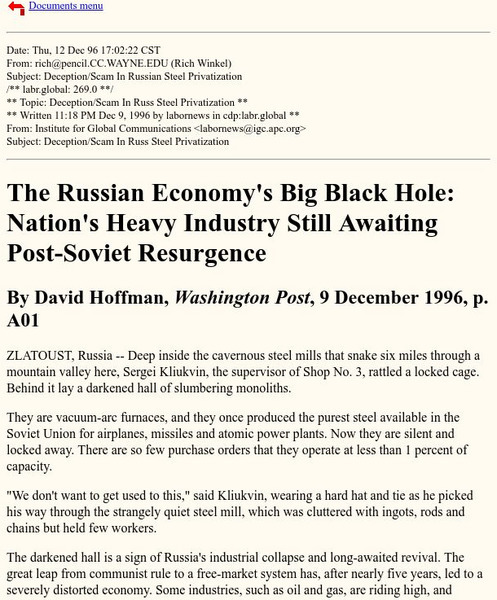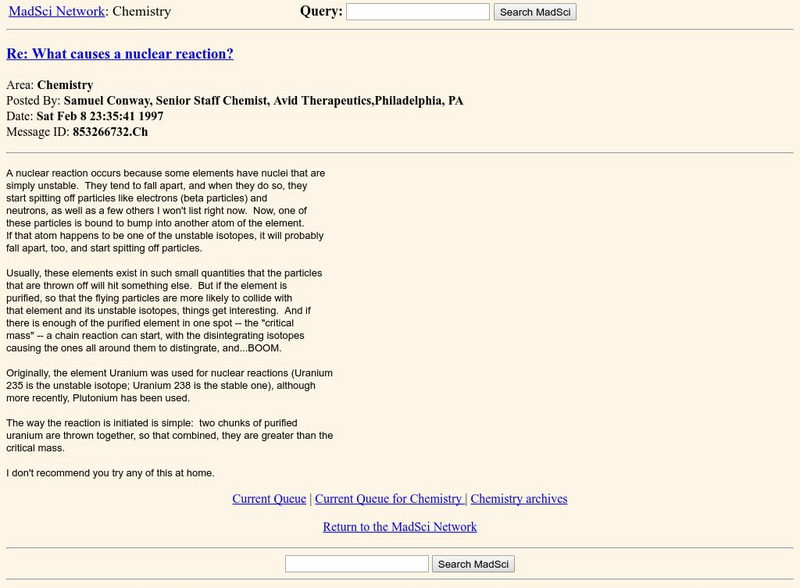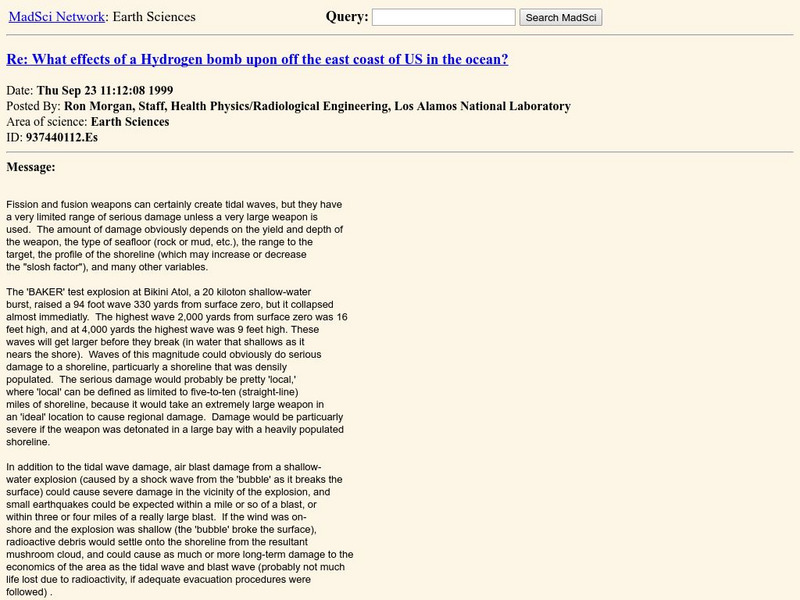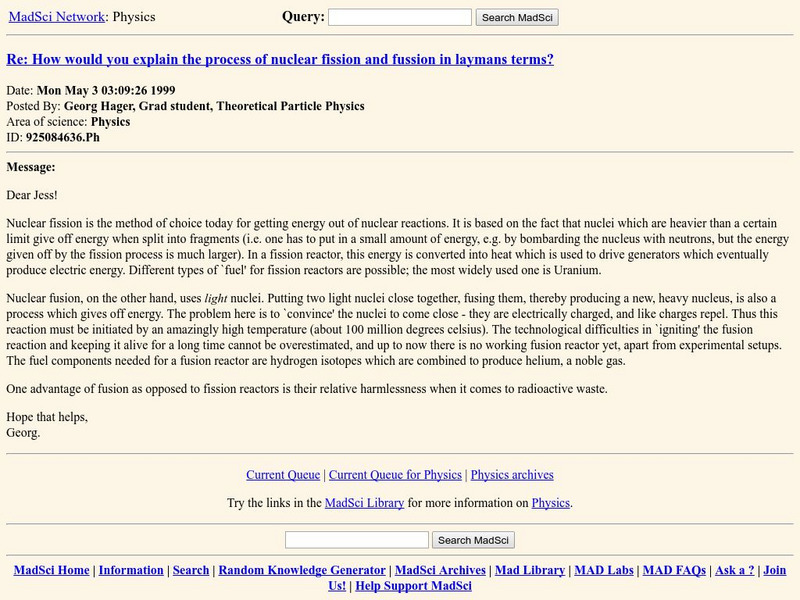TeachEngineering
Teach Engineering: Energy Forms and States Demonstrations
Demonstrations explain the concepts of energy forms (sound, chemical, radiant [light], electrical, atomic [nuclear], mechanical, thermal [heat]) and states (potential, kinetic).
TeachEngineering
Teach Engineering: Energy Sources Research
Fact sheets are provided for several different energy resources as a starting point for students to conduct literature research on the way these systems work and their various pros and cons. Students complete a worksheet for homework or...
TeachEngineering
Teach Engineering: Energy Systems
Posters are provided for several different energy conversion systems. Students are provided with cards that give the name and a description of each of the components in an energy system. They match these with the figures on the diagram....
TeachEngineering
Teach Engineering: Energy Resources and Systems
Several activities are included to teach and research the differences between renewable and non-renewable resources and various energy resources. Learners work with a quantitative, but simple model of energy resources to show how rapidly...
TeachEngineering
Teach Engineering: Generators: Three Mile Island vs. Hoover Dam
Students are given a history of electricity and its development into the modern age lifeline upon which we so depend. The methods of power generation are introduced, and further discussion of each technology's pros and cons follows.
Texas Education Agency
Texas Gateway: Forms of Energy
Given diagrams, illustrations, or descriptions, students will identify the types of energy.
Texas Education Agency
Texas Gateway: Radiation Types
Given illustrations, diagrams, or descriptions, students will identify alpha, beta, or gamma radiation.
University of Michigan
Department of Nuclear Engineering at U of M
This is the website of the Department of Nuclear Engineering at University of Michigan. There a links to academics, research, degree programs, etc.
Texas A&M University
Texas a & M University: Nuclear Engineering
This is the website for the Department of Nuclear Engineering at Texas A & M University. It focuses on the Nuclear Engineering program, and current news about the field.
PBS
Pbs Learning Media: Journey Into Dna
Travel deep into the human body to see exactly where your DNA resides. From the NOVA: Cracking the Code of Life Web site.
PBS
Pbs Learning Media: How Cancer Cells Grow and Divide
This animation from NOVA: "Battle in the War on Cancer: Breast Cancer" describes how oncogenes cause cancer and how cancerous cells can spread throughout the body.
US Department of State
U.s. Dept. Of State: Archive: Inf Treaty of 1987
Copy of the INF Treaty made by the US and the USSR in December of 1987.
Chiral Publishing
Chiral Publishing: An Introduction to Chemistry: Nuclear Energy: Audio Book
Listen and learn as you view examples and explanations of nuclear energy. View examples and formulas for binding energy, nuclear fission, chain reaction, and nuclear power.
US Department of Energy
Fus Ed Web: Physics of a Fundamental Energy Source
An excellent resource on nuclear fusion! Using incredible graphics and excellent discussion, this site (with its several pages) provides an exhaustive online course on the topic. Click on the link for "a Guided Tour" and begin.
BBC
Bbc Mundo: El Ano Magico De Einstein
A special feature on Einstein from the BBC, in Spanish. Follow Einstein's life, including his role in the development of the atomic bomb; learn about the impact and practical applications of his work; or watch a speech he gave in 1950...
Hartford Web Publishing
World History Archives: Banditry Threatens the New Russia, Law
An article about threats to Russia's free-market economy and the breakdown of law enforcement.
Hartford Web Publishing
World History Archives: David Hoffman: The Russian Economy's Big Black Hole
An article about one of Russia's steel mills that has, like many other industries in Russia, fallen on hard times in the new free-market economy.
MadSci Network
Msn: What Happens in a Nuclear Reaction?
From The Mad Scientist Network web site. Using a question and answer format, this page discusses three types of nuclear reactions - spontaneous decay reactions, nuclear fision reactions, and nuclear fusion reactions. Each reaction type...
MadSci Network
Msn: What Regulates the Speed of Hydrogen Fusion?
From the Mad Scientist Network web site. Using a question and answer format, this page describes the various types of fusion processes and the physical requirements needed for their initiation and sustenance. Factors affecting the rates...
MadSci Network
Msn: What Are the Effects of a Hydrogen Bomb?
From the Mad Scientist Network web site. Using a question and answer format, this page describes some potential effects of a nuclear explosion. The possibilities of tidal waves, earthquakes and radiation-related damages are discussed.
MadSci Network
Msn: How Would You Explain the Process?
From the Mad Scientist Network web site. Using a question and answer format, this page explains the differences between nuclear fusion and nuclear fission. The details of each process are sketched in simple language.
TED Talks
Ted: Ted Ed: Fermium: Periodic Table of Videos
The team at Periodicvideos has created a TED-Ed Lesson for every element of the periodic table. Fermium is named after a pioneer in the field of radioactivity and nuclear power. [1:48]
Stanford University
Stanford Report: Edward Teller, Father of Hydrogen Bomb
Students don't generally learn much about Edward Teller in school. But with the progress in science in the 20th century, maybe they should. Edward Teller was one of the main architects of the hydrogen bomb. This is a great site by...





